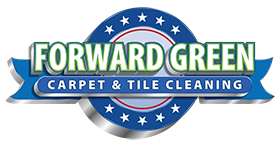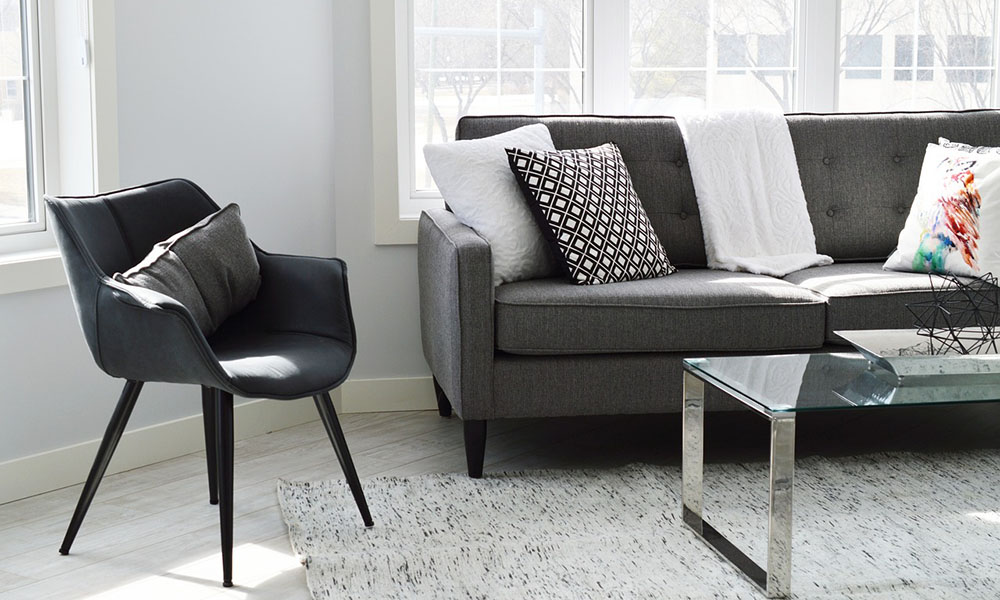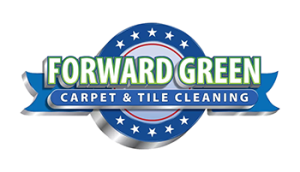It doesn’t come out as a surprise that every abode will consist of upholstery essentials to provide you with the most comfortable sitting. The sofas, loveseats, and chairs impart a snug realm to rest, work, or even fall asleep. Apart from its utility as being your relaxation tool, it serves as essential home décor. Whether you’re a modern passionate or vintage enthusiast, housing elegant microfiber couches would undoubtedly be your furnishing goal.
Within the upholstery domain, the microfiber based sofas and couches have rightfully settled within the limelight. This could be credited to the fact that its soft and luxurious exterior is coupled with a sturdy and durable interior. This makes it a smart choice for the customers, satisfying them most cost-effectively.
The cushy sofas dutifully resonate their sleek design and uplift your crib’s appeal. Not only that, but they also improve air quality by causing the dust and dirt to adhere to it. The prolonged usage, without regular maintenance, would hence, inevitably increase its likeliness to become dull and dirty. This would consequently diminish the aesthetics it could potentially offer and deprive the room’s ambiance of the coziness.
No matter how many times you stop your children from running circles around the upholstery, they’ll end up damaging them. Though it certainly isn’t their fault, you just can’t stop them from turning sofas into their imaginary castles. Let alone your children; even grownups could accidentally cause spills and stains that become a nightmare to remove. If you somehow manage the family members under strict control, your pets won’t compromise in leaving their marks on the sofa.
Why do you need to clean your Microfiber Couch?
The ongoing day to day activities would sooner or later result in your couch diluting itself with dirt, grime, dust, and even microbial contaminants. This makes couch cleaning an essential part of periodic maintenance. Whether you’re considering residential or commercial upholstery, a knowledge of the correct procedure on how to clean upholstery is beneficial.
Although each of the disasters mentioned above can become havoc, regular cleaning can help remove the layers of dust and dirt. That is why our experts at Forward Green Carpet and Tile Cleaning have tirelessly worked to provide you with the following in-depth guide. This guide includes all the pro-tips and tricks to revive the aesthetics of your sofas and couches. So be sure to read through to convert those worn out microfibers to brand new furniture!
In case the stains or spills have taken over and exceeded your capabilities, we’re just a call away. Our experts have developed various techniques to ensure your upholstery cleaning is done in an environmentally friendly way. Providing excellent customer service is among our core competencies, hence our professional cleaners will guarantee the highest quality. So be sure to give us a call, we’re here to save the day!
DIY Microfiber Couch Cleaning 101
Preventive Maintenance
Before you gear up and start scrubbing randomly, you might end up ruining your costly asset rather than cleaning it. Although regular ‘Preventive’ maintenance is recommended, likely, your couch hasn’t been washed for months. Don’t worry, there’s light at the end of this dreadful tunnel, and we’re going to guide you through it. So here are a few tips which could help prevent permanent damage to your elegant upholstery.
- Regularly vacuum over the sofas and couches to remove dirt and dust before they start sinking in.
- Keep your microfiber couches fresh and odor-free by occasionally sprinkling a little baking soda underneath the cushions. Allow a few hours for the magic to take place and then simply scrape off the remnants using a vacuum.
- If a vacuum isn’t available, make use of a clean, stiff brush to scrape off the contaminants.
- Try avoiding snacking on the couch, especially for the kids.
- Try mitigating fresh stains asap by using a slightly damp, clean piece of cloth.
- Keep a fabric spray at your home to help protect the fibers. Do refer to the instruction manual as well as your sofa’s nature before use. Not all the sofa’s welcome this treatment.
- Try removing entanglement of the microfibers, preferably by using a clean, soft comb.
- For the smaller spots, you could simply remove them by masking fluids often used by art enthusiasts. It turns out to be quite useful and straightforward to use.
Pro-tip: if you’re a young housewife dealing with a toddler, baby wipes are probably equipped in your drawers. Make use of them as they are pretty compelling to remove fresh stains.
Preliminaries – Know you Microfiber Couch
If your sofa is wounded beyond preventive maintenance repair, then it’s time to undertake a cleanup mission. However, before the onset of your journey, it’s imperative to know your upholstery’s specs. While microfiber couches are comparatively convenient to clean, it does get a little tricky. That’s because these polyester or nylon based fibers are about a hundredth of your hair’s thickness. Hence, aggressive scrubbing or applying random detergents would harm these fibers and diminish their vibrant sight. Refer to the manufacturer’s instructions tag on your couch and here’s the interpretation for your understanding:
- W: indicates the utilization of water-based cleaning reagents only.
- S: indicates the utilization of solvent-based cleaning reagents only.
- S-W: indicates the choice of the utilization of either of the reagents.
- X: indicates that your sofa is not compatible with either of the reagents. Cleaning is done via vacuum only.
Comparison between Water and Solvent based reagents
Water-based reagents are easier to find in stores or craft from your home supplies. These cleaners remove dirt, grime, and dust by dissolving them or chemically reacting to dissolve sturdy contaminants. The usual ingredients in an aqueous solvent are detergents, emulsifiers, saponifiers, and chelating agents. Their combined tasks are to react and dissolve the various contaminants that adhere to the microfibers of your couch.
On the other hand, most microfiber couches are marked ‘S’ which makes them suitable to clean only via solvent cleaners. Hence, these chemicals work by breaking down the more substantial sized contaminants and diffusing them into the solvent. This solvent then acts as a carrier and removes the dirt, grease, and oil away from the microfibers. Common examples of such cleaners are alcohol and glycerin; these mild solvents are readily available too.
Cleaning Gear
Before you engage in cleaning the microfiber couches, make sure you’re equipped with the following arsenal.
- Vacuum cleaner, preferably with an upholstery attachment.
- Bleach or Baking Soda solution (for water-based cleaning)
- Rubbing alcohol (for solvent-based cleaning)
- Clean, dry, spray bottle
- Scrubber with strong brushes
- Clean, white absorbent towel or sponge
Pro-tip: To make the bleach solution, add 4 teaspoons of bleach per quart of water in a container and mix well. For the baking soda solution, add about 2 tablespoons of water and 1 tablespoon of baking soda. Mix well until a paste is formed.
Note: We recommend white towels to prevent any color or de-coloring of your sofa.
Step 1: Vacuum your upholstery.
Before penetrating deep into the microfibers of the couch, remove all possible surface debris by hoovering. Try covering all areas of the sofa, connect the upholstery attachment to enhance the cleaning efficiency.
Step 2: Spray the Water / Solvent-based reagents.
For the ‘W’ tagged microfiber couches, spray the alcohol solution over the microfibers, focusing on stained spots. It’s better to begin systematically, i.e., first spray on one side, clean it, and repeat it for the remaining sides.
For the ‘S’ tagged microfiber couches, if you’re using a bleach solution, follow the same procedure as mentioned above. If you’re using a baking soda paste, carefully apply it over the stain using a spare toothbrush. Leave it for about 20 minutes. Then gently clean using a clean piece of cloth.
Caution: do NOT use bleach solutions if your couch is white or light-colored. It could be too strong for the microfibers, cause their breakdown, and leave an unpleasant mark behind.
Step 3: Scrub the dirt
After allowing some time for the cleaners to settle and penetrate, grab your scrubbing brushes. Begin scrubbing gently in a rotary motion, either clockwise or anticlockwise. Do not press the brush too hard as it might damage the microfibers instead of washing them. Rub the area until the stains are not visible anymore.
Step 4: Swipe away with an absorbent
Once the dirt and grime have been scrubbed, it’s time to remove them from the couch’s surface. Apply the sponge or towel over the scrubbed area. The fluids, along with the contaminants, will begin to soak up. To apply pressure, you can place some weight over the towel/sponge.
Step 5: Clean your upholstery
Repeat the above steps for each of the regions of your microfiber couch. By the end of it, you’ll find your sofa all healed up and ready to lift your room’s aesthetics.
FAQ’s
Can you wash a Microfiber Couch?
Only the microfiber couches tagged ‘W’ could be treated with water. Although preventive maintenance is recommended, the couch covers can be thoroughly cleaned in your washing machine. In fact, we recommend regular washing of your couch covers to revive the glamorous exterior as well the interior. First, remove the back and seat cushions, ensuring the stuffing and the foams are separated. Then wash the covers adjusting your machine’s settings according to the size and type of material used. Set the temperature around the ‘warm’ mark and make sure it rinses them, so there isn’t any remaining detergent left. Keep the washing settings to ‘hand wash,’ You can opt for your regular wash cycle.
After washing, you’ll also need to take care of the drying part. Keep the heating to a minimum and set the timer to be around 20 minutes. Once the cycle is completed, check the covers. If they’re still moist, you could repeat the process, but try to keep check of the time.
How do I clean Microfiber Couch Cushions?
The microfiber couch cushion covers can be cleaned by the steps mentioned above. As for the cushions, we recommend you re-fluff them. Since overtime the stuffing compresses, it reshapes the sofa and makes it pretty hard. Those who practiced this have found their precious couches living and long and happy life. All you’ll need to do is grab a box of Poly-Fill from your local store and start stuffing. If it still feels slightly soggy, spray some adhesives and form another layer of the stuffing to retain the shape.
How can I make my microfiber look new?
We’re pretty sure that by following the tips and tricks we’ve detailed, your priceless possession will undoubtedly look new and improved!
Pro Green’s Professional Cleanup – Microfiber Couch Renaissance!
The tips mentioned above and tricks will definitely remove your routine debris and answer your question, “how to clean microfiber couch?”. Freshly stained couches might be an unpleasant sight, but timely action can help mitigate the concerns. However, some stains just don’t seem to leave your sight. These contaminants are resistant to conventional domestic cleaning and become a menace, leaving your attempts in vain.
Times like these call for professional service providers to roll up their sleeves. We at Pro Green are ready to tackle even the hardest of stains with the superior deep cleaning technologies. While many others might offer the same services, our core competency revolves around environmental sustainability. As a result, all our methods strictly observe Eco-friendly standards.
Here are some of the microfiber upholstery cleaning techniques we provide to satisfy your desire.
Dry Upholstery Cleaning
This method involves our biodegradable cleaning powder being applied and scrubbed via counter-rotating brushes. Then the couches are thoroughly vacuumed using our heavy-duty machinery.
Hot Water Extraction
Through a blend of high-pressure hot water and our organic cleaning agents, the debris and allergens are dissolved in the water. Then removed from the microfibers.
So let us worry about the ordeal, our arsenal of cleansing gear is no joke!



